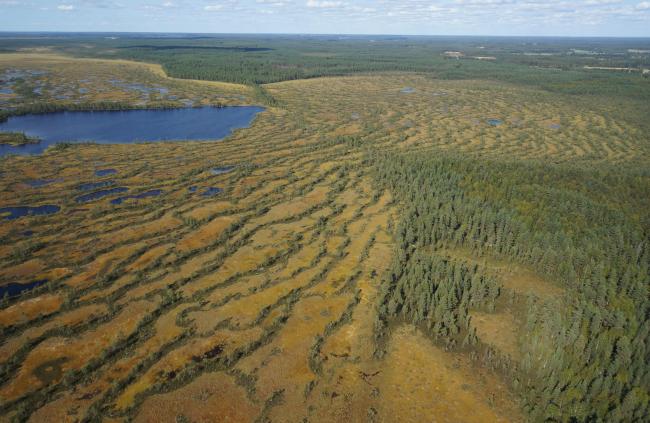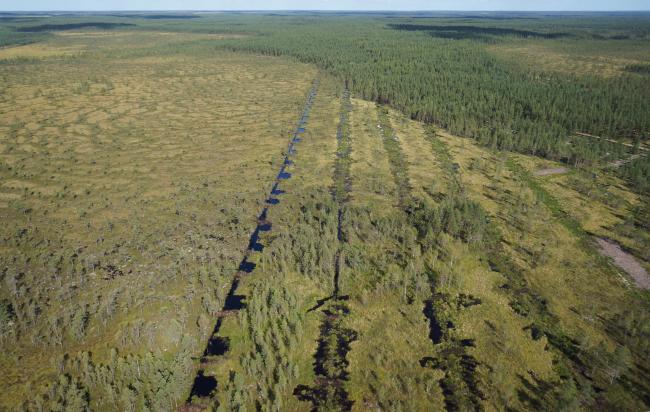Kauhaneva - Pohjankangas National Park
Kauhaneva - Pohjankangas National Park
- Country:
- Finland
- Site number:
- 1511
- Area:
- 6,849.0 ha
- Designation date:
- 02-02-2004
- Coordinates:
- 62°11'N 22°25'13"E
Carousel
CarouselMaterials presented on this website, particularly maps and territorial information, are as-is and as-available based on available data and do not imply the expression of any opinion whatsoever on the part of the Secretariat of the Ramsar Convention concerning the legal status of any country, territory, city or area, or of its authorities, or concerning the delimitation of its frontiers or boundaries.
The Site is composed of mires, which form the largest and most representative raised bog area in the region of concentric bogs in southern Ostrobothnia. Forests are mainly dry pine forests. Large areas of forests are situated on eskers. Kauhaneva is a diverse wetland complex with different mire types and mire bird species are well represented. The Site is an important staging area for geese and cranes, including bean goose (Anser fabalis) and common crane (Grus grus), and also arctic loon (Gavia arctica). Gray wolf (Canis lupus) and Eurasian lynx (Lynx lynx) are also present. As an active and mostly pristine peat bog, the Site is very valuable for carbon storage and flood control, as well as scientific research, birdwatching and outdoor recreation. There are 38 archaeological sites within the Site. Forestry drainage and peat mining in the surroundings have an impact; in addition, groundwater is abstracted from the connected aquifers and there are initiatives to increase the abstraction which may have a negative impact on the habitat types. Mires were restored from 1996 to 2017 under the European Union’s LIFE programme, by filling up ditches and cutting trees.
- Esker Conservation Programme
- Mire Conservation Programme
- National Park
- EU Natura 2000
- FI1511RIS_2304_en.pdf

